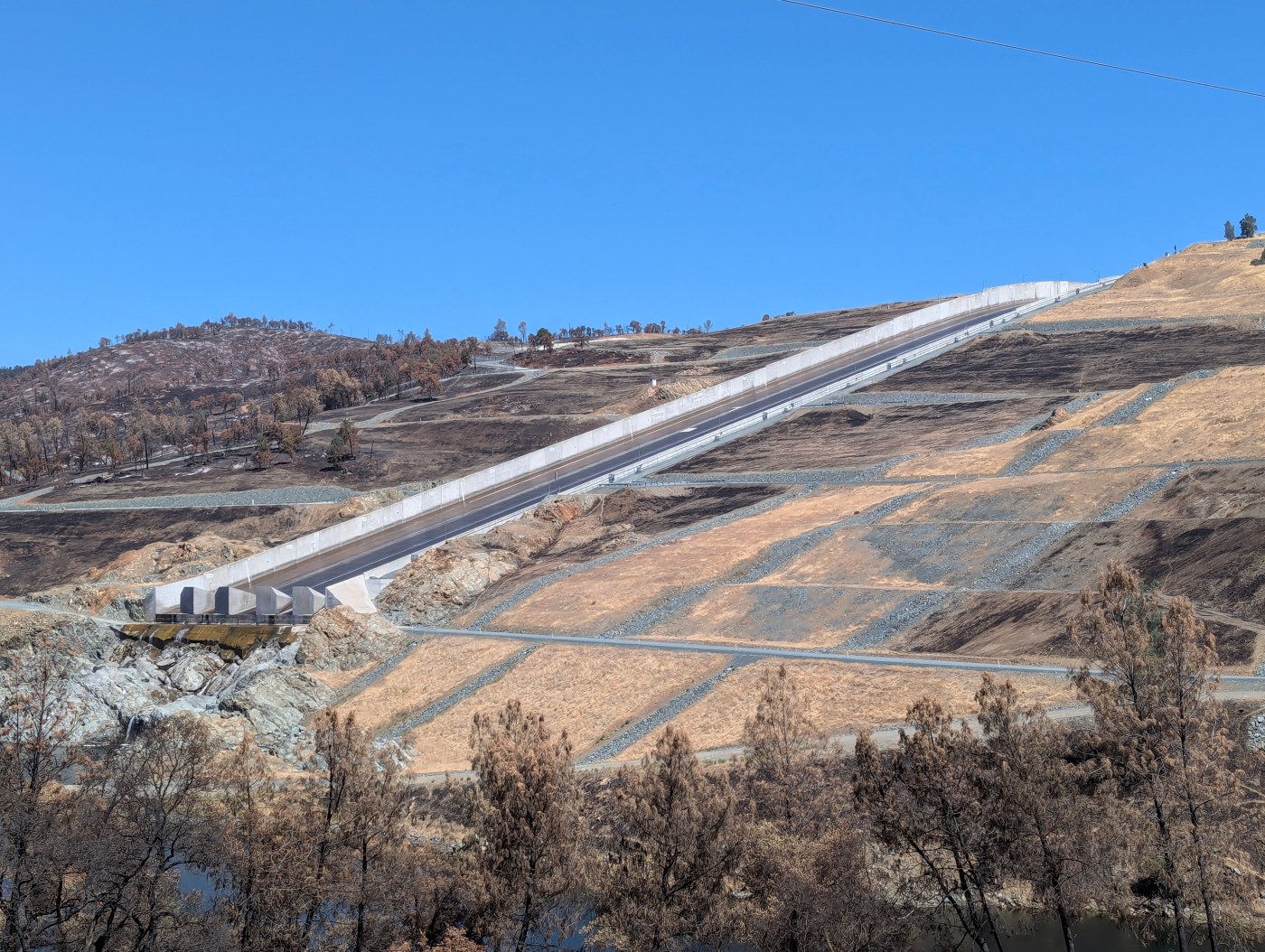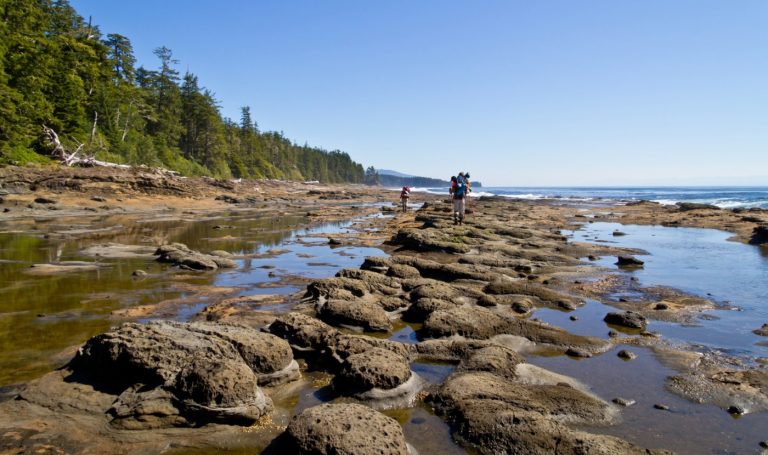OROVILLE — From almost any vista point around the southern portion of Lake Oroville, scorched earth from the Thompson Fire in July is clearly visible.
While the charred landscape surrounds the main spillway, the California Department of Water Resources said the structure itself did not sustain damage.
“Thompson Fire damage was limited to vegetation and minor structures such as fencing and trail structures like wooden footbridges,” said Tracy Hinojosa, DWR Water Operations Manager with the State Water Project. “DWR and State Parks are coordinating to remove hazard vegetation near trails and replace footbridges. Several trails within the Lake Oroville State Recreation Area remain closed including those around the diversion pool, Potter’s Ravine and the North Fork Trail area.”
The pathway to the trails opposite the Feather River from the spillway has been blocked off since the fire. From Oroville Dam Boulevard East, the spillway can be seen alongside the remains from the fire where it brushed up against the structure.
At 2 p.m. Monday, Lake Oroville had a reported elevation of 831.96 feet. This is a significant drop from when it peaked in June but still higher than some previous years around the same time when it was well below 700 feet.
Lake Oroville sits at 831 feet in elevation on Monday, Aug. 19, 2024 near Oroville, California. (Jake Hutchison/Enterprise-Record)
Hinojosa said the current outflows from the lake are limited to 9,500 cubic feet per second adding that the releases are to meet downstream water requirements as well as to meet water delivery needs. The releases are split with 6,700 cfs released from the Thermalito Afterbay River Outlet and the remaining 1,300 released through Oroville.
“Current inflows into Lake Oroville range between 2,500 to 3,000 cfs,” Hinojosa said. “There is no snowpack remaining. Inflows into Oroville are primarily those from the upstream watershed and releases from upstream reservoirs such as Lake Almanor.”
While the snowpack has dwindled, a rare summer storm is expected to hit parts of Northern California later this week. Dakari Anderson, a meteorologist with the National Weather Service’s Sacramento Office said there was a possibility of scattered showers, high winds, thunderstorms and even small hail later this week.
“This is actually pretty uncommon for this time of year,” Anderson said, noting that these weather patterns typically don’t emerge until late in the fall or more likely into the winter..
In response to the weather forecast, Hinojosa said there could be some changes made to how water is released pending the storm.
“DWR may reduce total Feather River releases later this week due to changing Delta water supply requirements,” Hinojosa said. “DWR assesses conditions and forecasts daily and will adjust releases in response to downstream requirements such as Delta flow and water quality.”













+ There are no comments
Add yours